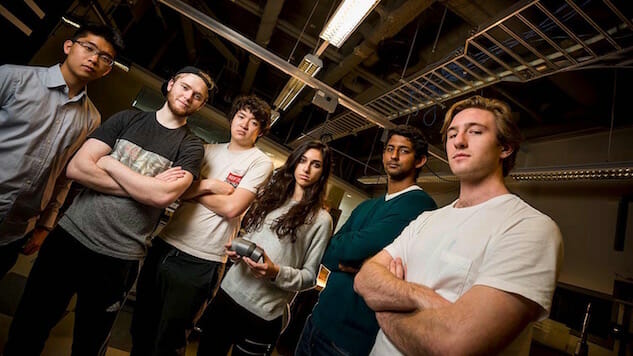Let’s Take a Closer Look at this Moon Beer Idea
Photo by Erik Jepsen/UC San Diego
Realistically, it takes a few days for a manned mission to reach the moon. Neil Armstrong and Buzz Aldrin had to wait 109 hours before they could hop out of the Eagle and stretch their legs on the lunar surface. Luckily for modern astronauts who are braving the lengthy journey, there might just be a cold sip of beer waiting for them when they get there.
A team of UC San Diego engineering students calling themselves “Original Gravity” are designing an experiment to test whether or not yeast can survive in the harsh atmosphere of the moon – and they intend to do it by brewing a batch of “lunar beer” (for science!).
The pioneering project is one of 25 final entries in the Lab2Moon competition hosted by Google Lunar XPrize participant, TeamIndus – a privately funded Indian space team. If the San Diego students can clinch the final prize in March, then on December 28, 2017, they’ll get to boldly brew where no one has brewed before.
“The idea started out with a few laughs amongst a group of friends,” said Neeki Ashari, the team’s PR and operations lead. “We all appreciate the craft of beer, and some of us own our own homebrewing kits. When we heard that there was an opportunity to design an experiment that would go up on India’s moonlander, we thought we could combine our hobby with the competition by focusing on the viability of yeast in outer space.”
Of course, whipping up a batch of space beer is not without its complications. Normally, the beer-brewing process starts with submerging grains in heated water to extract fermentable sugars. This sweet liquid is then boiled, along with some hops for flavor and aroma. Next, the unfermented beer (called wort) is cooled and transferred to a fermenter where yeast is added to work its beer-making magic. Finally, the finished product is bottled or kegged.
-

-

-

-

-

-

-

-

-

-

-

-

-

-

-

-

-

-

-

-

-

-

-

-

-

-

-

-

-

-

-

-

-

-

-

-

-

-

-

-








































